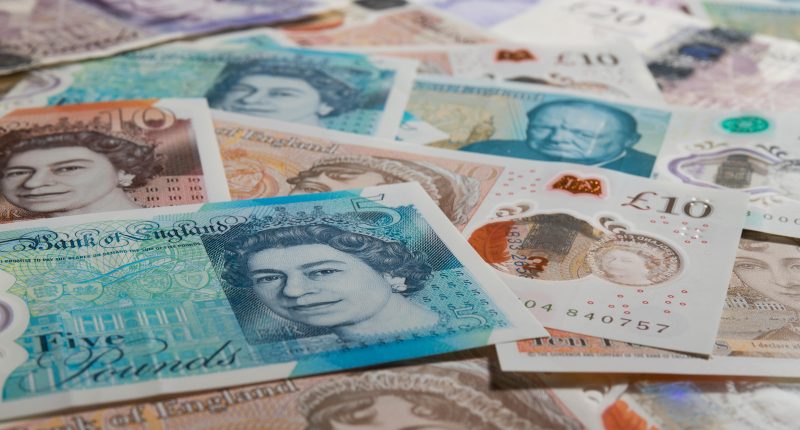The new tax year is finally upon us but as ISA allowance resets and new rules have come into play planning how you save your money could boost your final pot by thousands.
ISAs are savings tax-free accounts that still earn interest which can make them a better choice than a standard savings account.
The new tax year has started, which means everyone’s £20,000 ISA allowance has officially been reset.
Any bonus you could potentially earn on money saved will not arrive till April 2025.
But with a fresh clean slate now is a good time to organise your finances so you can get the most out of your ISA savings every month this year.
April is the best month to open a new ISA account and start saving and doing so could boost your funds by thousands.
Read more money stories
There are five different types so it’s worth doing your research before opening one so it matches your needs best.
Here are the five different types of ISAs:
Cash ISA
Cash ISAs can be opened by anyone 16 or over and you can deposit a maximum of £20,000 into one per tax year.
Most read in Money
There are different types of cash ISA’s and they will each come with their own set of rules.
Easy-access ISAs let you add money in which can be taken out at any time without a charge.
Fixed-rate ISAs tend to offer higher interest rates than easy-access ISAs, but you will probably have to pay a fee for withdrawing money before the end of the term.
To make the most out of your cash ISA, it’s best to start saving in one early.
You’ll earn tax-free interest on any savings put into a Cash ISA from April 2024 right up until April 2025.
For example, if you put £500 in a cash ISA from this month with an interest rate of 5% by the end of the year you’d have an extra £21 tax-free in your account.
That number would only increase if you added more to your Cash ISA and could reach thousands by April 2025.
It’s best to check your Cash ISA rules if you plan on making withdrawals at any point through the year, as it would affect your annual ISA allowance.
Under new rules, you must be aged 18 or over to open a cash ISA as opposed to age 16 or over in the previous tax year.
Stocks and Shares ISA
Stocks and Shares ISAs can be opened by anyone 18 or over and the maximum amount you can put into one is £20,000 per tax year.
Usually, you have to pay a number of fees with a Stock and Shares ISA too, so that’s another thing to bear in mind.
Any money invested into a stocks and shares ISA is subject to the stock market changes so there is a chance your money could decrease after you invested it.
However, investing in a company that hands out dividends and it performs well you could benefit from 12 months of dividend payments if you invest this month.
What is a Lifetime ISA?
FIRST-time buyers saving into a LISA can stash up to £4,000 into this account each year tax-free.
The government will add a 25% bonus to your savings, up to a maximum of £1,000 per year.
For example, if you save £4,000, you’ll get a £1,000 bonus.
The amount you pay in is linked to your annual ISA allowance (£20,000 for 2023/24) – for example, if you pay £1,000 into your LISA, you can still pay £19,000 into other ISA products.
Any bonus you earn doesn’t count towards your ISA allowance.
You can open a Lifetime ISA with any bank, building society or investment manager that offers the product.
You can only open a LISA if you’re aged 18–39.
You can hold multiple Lifetime ISAs, although you can only pay into one each tax year.
You can also transfer your Lifetime ISA to another provider, for example, to get a better interest rate.
If you want to use a Lifetime ISA to buy a home, there are a few restrictions you need to keep in mind:
- Only first-time buyers can use Lifetime ISAs to buy a home, which means you can’t own, or have owned, a home in the UK or anywhere in the world.
- You’ll need to be buying a home for no more than £450,000.
- You must be buying a home you plan to live in – the scheme isn’t for buying a home you want to rent out, or a holiday home.
If you don’t use it to buy your first home, you can continue paying into a LISA until you’re 50.
You can then make full or partial withdrawal from your LISA, without paying a fee, when you turn 60.
Lifetime ISA
Anyone between 18 and 39 can open a Lifetime ISA and deposit a maximum of £4,000 per tax year into one.
You can keep adding money into one up until you are 50 and must make your first payment into one before the age of 40.
You get a 25% bonus on top of any personal contributions.
So if you added £4,000 into one this tax year, you would get £1,000 free from the government.
However, you must use this money to buy your first home or save for retirement.
Most people find it easier to save in a lifetime ISA with small monthly payments.
For example, if you wanted to save £4,000 to get your full £1,000, you would save around £333 a month.
But anything you put in a Lifetime ISA will start earning interest straight away, so the more money you put in straight away the more interest you will earn.
Junior ISA
Junior ISAs (JISA) can be set up for any child under the age of 18 and living in the UK.
You can save up to £9,000 a year in one of the accounts, and the child can then withdraw the money when they turn 18.
That said, the child can take control of the account when they turn 16.
Just like a Lifetime ISA, the more and the sooner you money into a Junior ISA the more interest your child will earn over time.
IFISAs
Anyone 18 or older can open an IFISA (Innovative Finance ISA) and deposit a maximum of £20,000 into one each tax year.
But you can lose money through an IFISA if the people you’ve lent to can’t afford to repay the loan.
Another disadvantage is that it can take a while to withdraw money from one.
If a business does well and you invest early you have more time to earn interest the sooner you invest.
Under new rules from today, you can now hold multiple ISAs of one kind.
Alice Haine, Personal Finance Analyst at Bestinvest by Evelyn Partners said: “This will be useful for investors who want to use more than one provider or have different ISAs for different financial goals.”
READ MORE SUN STORIES
You will also be able to do partial transfers of ISA funds no matter when you paid the money in – although you still won’t be able to pay in more than your annual ISA allowance.
If you’re opening a savings account, be sure to shop around for the best rates. You can get up to 5.17% easy access with a cash ISA, or up to 5.05% fixed.
Do you have a money problem that needs sorting? Get in touch by emailing [email protected].
Plus, you can join our Sun Money Chats and Tips Facebook group to share your tips and stories









